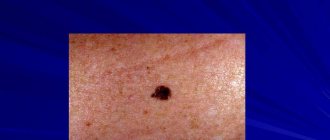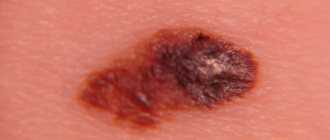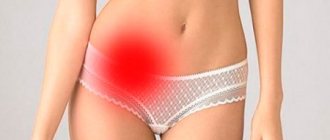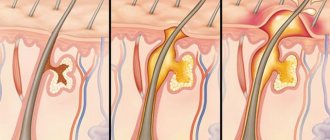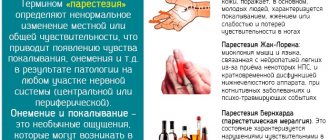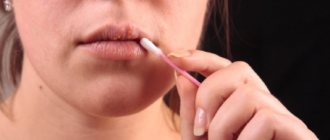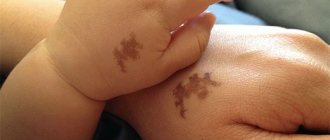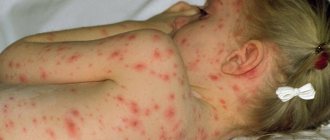Complications
The consequences of furunculosis are a cosmetic defect caused by scarring.
In some people prone to the formation of keloid scars, traces of furunculosis may be significant, with tightening of the surrounding tissue. The formation of boils is especially dangerous in exhausted, weakened patients. In such patients, the disease is often complicated by an abscess or phlegmon (purulent melting) of the skin and subcutaneous tissue. The appearance of boils on the upper lip is very dangerous. From here, infection through the venous and lymphatic vessels can easily spread to the vessels of the brain and even cause sepsis - a general blood infection.
Infection of the veins with a facial boil causes progressive inflammation, that is, thrombophlebitis. From there, the pathogens enter the sinuses (extensions) of the dura mater, causing a serious complication - purulent basal meningitis. It is accompanied by the rapid development of facial edema. Condensed veins are palpable and may be painful. Body temperature rises sharply to 40 degrees and above. Rigidity of the neck muscles is observed (the patient cannot tilt his head forward), headache, blurred vision and consciousness.
If the formation occurs on the neck, thigh, shoulder, it can be complicated by lymphadenitis - inflammation of nearby lymph nodes.
If staphylococcus gets into the blood, purulent foci may form in the internal organs - liver, kidneys and others.
Factors contributing to the development of complications:
- attempted squeezing, piercing or other impact;
- injury while shaving;
- irrational treatment with only ointments and other topical agents;
- location of the boil in the nasolabial triangle, on the nose.
Why is there a problem?
The main “culprit” for the formation of boils is staphylococcus. This is a pathogenic microorganism that lives on the skin of even healthy people, but does not manifest itself in any way when the body’s defenses are adequately functioning. The very first immune failure can result in the occurrence of purulent infections on the skin (for example, furunculosis on the back, if left untreated, can develop into sepsis - blood poisoning).
In addition to the increased activity of staphylococcus, there are several other factors predisposing to the development of furunculosis:
- Increased sweating. Constant exposure to sweat on the skin negatively affects “local” immunity.
- Damage to the integrity of the skin (injuries, scratches caused by other dermatological problems).
- Contact with the skin of discharge from the nose and ears, which accompanies the course of inflammatory diseases - for example, otitis or rhinitis.
- A boil can form on the back due to failure to comply with basic personal hygiene rules. So, dirt, particles of sebum, sweat accumulate in this area, and the skin of the back constantly rubs against clothes.
- Decreased skin immunity due to regular interaction with chemicals (allergens, irritants).
Boils on the back are one of the manifestations of immune failure. Thus, a decrease in the body’s protective functions is caused by:
- chronic untreated infectious diseases or the presence of an active inflammatory process in the body (rhinitis, bronchitis, etc.);
- pathologies associated with immunodeficiency (HIV);
- taking cytostatics, immunosuppressants, as well as long-term radiation therapy;
- vitamin deficiency, regular hypothermia, overheating, stress;
- poor nutrition, lack of daily routine, bad habits.
Why else can an abscess appear on the back? The reasons for this phenomenon often lie in hormonal imbalances. Thus, diabetes mellitus causes disruption of blood flow in small vessels that penetrate the upper layers of the skin.
Hyperfunction of the adrenal glands can contribute to the appearance of boils - these glands produce glucocorticoids, which suppress the immune system, stimulate the production of sebum, and testosterone - on the contrary, it causes excessive sebum synthesis.
Possible complications
Most complications develop as a result of independent attempts to open or squeeze out a boil.
Squeezing out a boil is very dangerous. Because of this, the infection can spread throughout the body.
Warming procedures must be performed with caution to avoid overheating. This will help prevent the spread of infection
This complication can lead to severe infectious damage to the heart, lungs, kidneys, bones, joints, brain and even death. Also, a boil can lead to scarring after healing.
Improper use of antibiotics can cause MRSA (methicellin-resistant Staphylococcus aureus). In this case, treatment can be very difficult and lengthy, and the risk of infection spreading throughout the body increases many times over.
With ineffective treatment or prolonged self-medication, a large amount of pus can accumulate inside the boil, which can lead to the development of an abscess boil.
We hope that our article: Boils on the face, causes and treatment, was useful to you.
It should be remembered that untimely or incorrect treatment of boils can lead to disastrous consequences:
How to cure a boil yourself without squeezing
You shouldn’t rush things and risk your health by squeezing out a boil outside a medical facility. You just need to let it fully ripen, and when it breaks through, carefully remove the pus with your hands, rinse the wound with hydrogen peroxide and apply one of these folk remedies:
Honey perfectly draws out pus and has a bactericidal effect
- aloe leaf, which is cut lengthwise, applied to the wound and secured;
- gruel from raw potatoes, which is applied in the same way as aloe;
- honey cake. Honey perfectly draws out pus and has a bactericidal and wound-healing effect.
Health to you and your loved ones!
Traditional medicine recipes
Purulent-inflammatory processes developing in the upper part of the body cannot be treated independently: there is a high risk of developing dangerous complications that can provoke blood poisoning. Abscesses located on the lower back are successfully eliminated using traditional medicine. Best suited for these purposes:
- Baked onions. The head is peeled, cut in half and placed in the oven. Bake at 180 degrees for fifteen minutes, cool. One half is applied to the surface of the boil and the bulb is fixed on top using an adhesive plaster and a sterile bandage. Change the bulb every four hours. The pulling properties of the onion are enhanced if you rub a piece of laundry soap on the already baked half of the head and lightly sprinkle it with water.
- Fresh leaf of white cabbage. It is first doused with boiling water and then applied to the abscess. It effectively relieves pain, eliminates swelling and inflammation, and draws out purulent contents.
- Honey cake. It is prepared from rye flour and honey heated in a water bath. The dough is kneaded from two ingredients, a flat cake is rolled out, and applied to the affected area. This treatment relieves inflammation.
- An ointment made from bee products. To prepare it, take 100 grams of beeswax and rosin, 50 grams of propolis and castor oil. All ingredients are placed in a metal bowl. Place it on low heat and heat it up. After five minutes, when all the solid ingredients have melted, add 15 ml of turpentine. The product simmers for half an hour, then cools, after which it is spread on a thick cotton napkin and applied to the affected area twice a day (morning and night) for twenty minutes.
- Warm bath with pine essential oil. A few drops are added to warm water, the temperature of which does not exceed 36 degrees. You should take a bath no longer than fifteen minutes. It relieves inflammation well and eliminates pain.
- Vodka compress. Prepared from a mixture of calendula flowers (30 grams), dry juniper berries (15 grams). The ingredients are pre-washed with boiling water, then poured with 100 grams of vodka. The product is infused for 24 hours, and then applied to the boil as a compress every day. The course of treatment lasts about 14 days.
The listed remedies are good for treating a ripening abscess
When the first signs of an abscess appear, it is important to see a doctor. Only he will be able to ensure proper drainage and removal of the necrotic rod
If it remains, the disease will begin to progress again, and the risks of developing unwanted complications will increase. What should you be wary of?
If follicles located nearby become simultaneously inflamed, a carbuncle with one necrotic core is formed. When it forms, the symptoms described above triple. The maturation of the carbuncle can provoke the spread of the inflammatory process to the sebaceous glands and subcutaneous fat. Then there is a risk of an abscess. The accumulated pus can easily penetrate into the blood, and then sepsis develops. In the absence of adequate treatment, death occurs quite quickly.
Unlimited spread of the inflammatory process provokes the formation of phlegmon. When it appears on the back, a person’s quality of life noticeably decreases. Its formation causes unbearable pain, which is poorly relieved by analgesics. It forces the patient to take a certain position and not move.
Since the cause of boils on the back is Staphylococcus aureus, the infection can spread to internal organs. The consequences of such complications can provoke irreversible phenomena, therefore alternative treatment of boils and carbuncles on the back must be carried out under the supervision of the attending physician.
Chir
Fishing is an incurable virus.
If you have already become infected, then parents, wives, children, future grandchildren, colleagues, friends and even sworn enemies cease to exist if the bream has left the spawn, or the vimba has entered the mouth. Humanity as a class ceases to interest, in principle, all 7 billion people. And I don't care that I'm an unlucky fisherman. And I don’t give a damn and from the big bell tower, at the same time. Fish in general is not the most important thing in fishing. So you try to continuously look at the float for 10 hours, while sometimes smoking, or even cutting down a tree, or cooking in a cauldron. If you don’t know how to do this, you are not a fisherman at all.
And rain in the face is not a hindrance and a leaky boat is not so dangerous if it bites. Yes, you can drown, but you can also choke in the bathroom, and although there is water there, there are no fish, which means death is meaningless. And drowning while fishing is an honor. There in paradise there is a separate room for luxury fishermen.
I found out.
And there are a great many types of fishing. I am a float mate and don’t feed me bread, let me look at the float for a long time. The most beautiful type of fishing is probably fly fishing, but it’s not my thing. I pestered the guy, I remember - show me, show me how it’s done. Everything special is there...
And the fishing line is somehow non-sinking and the fly is terribly believable and the fishing rod itself has some kind of special flexibility. Well, this is a beautiful long fluttering with a fishing rod, this unfortunate fly is terribly rocked at that moment and then once flew far into the water. I can persuade a dead person to dance a waltz with me, and it’s a piece of cake to show a fisherman “how to cast.”
For half an hour you pick his brains with questions and he is ready to give you the gear and all the cash he has with him. It was at this moment that the man handed me his rod and we began to go through the theory.
Somehow you have to swing the whip sharply to the left, then to the right, the fly should already be in flight, and then swing it about two more times to the sides and then towards the fish somewhere. The guy was caught nervous, that's the main thing. Pedagogy is clearly not his strong point. “Wider - says - swing” “Hold the rod higher” “Sharper to the right”...
And I’m a gambling person, I got crazy, in general, something got caught on something in the flight and I hit him in the face with a whip. He himself asked for wider, higher and sharper. And I’m not used to disobeying orders. Somehow he went home after our lesson. Chuika most likely. This is developed at the highest level among fishermen.
You feel that there won’t be a bite today and that’s it, you reel in your fishing rods and go home. And I already reeled in a fishing rod for him in advance, even more so. Qualitatively, it takes at least three hours to untangle. Well, he praised me greatly and thanked me from the bottom of his heart with exquisite words, and went home. I thanked him for a long time. I turned around to follow him, and he was just going up the bridge, he saw me again and said goodbye to me.
But, there is also winter fishing, among others. Here, the first thing you need to do is be cold, otherwise why do all this?! You need ice.
So, without ice, walk to the middle of the river through the water, sit on a chair and start fishing - they’ll take you to a mental hospital, but I need it?! You need to let it sit for at least a week, minus ten, then the ice will stick and you can get ready. Previously, everything was homemade. The rod itself was made of polystyrene foam.
Where was the correct polystyrene foam?! In the lining of the Soyuz-vnesh-trans storage facility. Every year after winter fishing they changed the covering. Well, they had good foam. That's it, in the night I tore off a piece and squatted home to grind fishing rods in the yards. Everything there is not clever, in principle.
My mother worked at Zhelezka, and she bought a three-piece suit there - wadded pants, a sweatshirt and felt boots. Well, in theory, ready for fishing.
There, special fans somewhere got a bloodworm, but I’m a simple person, the city’s champion in sociability - I asked someone for one smelt with a tearful promise to return it and the bait was ready. Even though smelt smells like cucumbers, it’s a cannibal. That's the only way she pecks at herself. And there this path, which the fishermen trampled down from the bridge, always gets dark and can be seen from afar. Well, the water rises because of the trampled mess. Well, that's all in essence.
You sit and freeze. Suddenly you look, about fifty meters away people start waving their arms vigorously - well, hooking fish. So the flock has arrived. That's it, wait now and the neighbors will stop drinking vodka. And sure enough, everyone’s nods start dancing, which means morning exercise has begun.
Still, they sit and wave their arms. Looks funny. Well, I pulled something there, gave this guy his fish, otherwise he’d been looking at me like a wolf all morning. The smell of cucumbers on the river is the same as at a vegetable base in season.
It happens that a pike looks into this cheerful booth and the one who caught it begins to yell with good obscenities, “Tolyan, drag the apex.” This is a medieval spear that winter fishermen use to make holes in the ice.
If the pike is large, then neighboring fishermen drill another hole nearby and then use an ice pick to cut through the ice between them to make a hole through which the pike’s shoulders will fit. In general, it has its own specifics and it’s never boring there.
https://www.youtube.com/watch?v=SwZ1VnM0fsQ\u0026list=PLgYmBU81A3hjxaFx2iR641QL8UvWeHOMo
If it bites, everyone catches it. If it doesn’t bite, then everyone drinks, explaining this phenomenon to each other by saying that “Purely for the warming, drop by drop.” It happened that some people became too hot and were dragged ashore to the car to cool down. I probably went ice fishing as a kid for about three years, but one day I stopped.
Firstly, the mood was so-so, because it was positive outside and this nasty slush underfoot and fine cold rain in the face... In general, I decided that the neighbors would do without smelt today. I don't eat it myself. Well, I got ready and wandered towards the bridge. This pick is also heavy as hell.
About ten meters from the shore, I decided to change hands - take the pick in my right hand, and the box with tackle in my left. The ice pick slipped out, and then it was like a roller coaster down, and my breath hitched in surprise. I hung on my elbows and in a loud, well-trained voice hysterically shouted to the fishermen that I had drowned.
In these cases, solidarity works instantly and about 10 people came running to me. Someone dragged boards from the shore, they were always lying there for this case and they finally pulled me out. Well, alive, healthy, what else do you need and everyone returned to catch, and I ran home.
The cotton pants with the sweatshirt were not the lightest anyway, but in the wet state, I think about 30 kilograms for sure. Of course, I poured the water out of my felt boots, so as not to make things worse, and walked home with the gait of a weightlifter. It took me about ten minutes to walk there, but with a wet kikimora I walked with side steps for probably half an hour.
The main thing was not to catch a cold and I didn’t catch a cold, which is very strange. And sometimes at home in a draft he will stretch out and say hello to the winter holidays. But about the holidays another time.
Source: https://pikabu.ru/story/chir_5928832
Basic methods of therapy
Boils that appear on the lower back are the safest. Therefore, independent methods are used to treat them. They are performed on single or small formations.
Among the main methods of therapy are the following:
- Application of Vishnevsky ointment. The procedure is performed as follows. A small amount of ointment is applied to a bandage or cotton wool swab, then applied to the site of inflammation and fixed with an adhesive plaster. The dressing is changed daily. After opening the abscess and releasing the pus, Levomekol ointment is applied. It contains antibiotics, which help prevent the inflammatory process.
- Using baked onions. The peeled onion is baked in the oven. After it has cooled, it is cut in half and one part is applied to the chiryak. The dressing is changed periodically and the wound is treated with hydrogen peroxide.
- A boil on the back can also be treated with herbal ingredients. One of them is aloe. The leaf of the medicinal plant is cut and the wet side is applied to the affected area. A bandage or plaster is used to secure it.
In many cases, folk remedies are used. An effective way to draw out pus from an abscess is boiled buckwheat. The porridge is wrapped in a bandage and applied to the wound. The compress must be constantly changed.
Raw potatoes are used to relieve inflammation. In addition, in the treatment of furunculosis, cranberry juice is used, from which lotions are made.
If the reason for the appearance of a boil is a violation of hygiene rules, in folk medicine they use medicinal baths to which potassium permanganate is added. It must be remembered that it is forbidden to rub the abscess.
A remedy containing dried nettle flowers helps clear the blood of infection. They are poured with boiling water, infused for half an hour and taken orally, three tablespoons per day. Pasta, confectionery, and spicy seasonings are excluded from the diet during treatment.
It is better to pay special attention to the consumption of fruits and vegetables
Cranberry juice is used for lotions
What to do when treating chiries on the back?
An abscess on the back requires complex treatment, which involves treating the external manifestations of the problem, eliminating the infection and strengthening the immune system. Treating boils on your own is dangerous, since improper treatment of the inflamed area of skin, incomplete cleansing of the abscess, or ignoring an infectious lesion of the body will lead to complications of the disease. As a result, furunculosis will develop.
Conservative therapy
Regardless of where the boil has formed - on the back near the neck or in the forearm area, the same treatment methods are used:
- The resulting compaction is disinfected with an antiseptic solution. It is impossible to apply iodine or brilliant green to boils before a medical examination.
- To relieve inflammation, apply compresses with Vishnevsky ointment. Warming compresses are prohibited.
- After the abscess has matured and opened, compresses with ichthyol ointment are used, which draws out the contents of the boil. You cannot squeeze out a boil before opening it yourself; this will lead to the spread of infection throughout the body.
- An open boil on the shoulder is washed with a 3% solution of hydrogen peroxide.
- After the boil has cleared, wound-healing ointments are used, for example, Levomekol.
- The patient is prescribed restorative drugs.
- If the patient’s body is weakened, furunculosis is diagnosed, a large boil has formed, the use of antibacterial drugs is prescribed to fight the infection that has led to the formation of an abscess on the back.
- A large boil can be removed surgically. The surgeon performs a minor operation to open the formation and ensure the outflow of subcutaneous contents.
Removing boils at home
| Means | Mode of application |
| Aloe | A piece of aloe leaf is cut lengthwise and placed with the wet side on the affected area, secured with an adhesive plaster. |
| Cranberry juice | Several times a day, apply a gauze pad soaked in cranberry juice to the abscess. |
| Buckwheat | Boiled buckwheat is wrapped in a bandage and applied to the boil, changing the compress every 2-3 hours. This remedy promotes rapid ripening, opening and cleansing of the abscess on the back. |
| Potato | To relieve inflammation, compresses made from grated raw potatoes are used. |
| Onion | Peel the onion and bake. Cut and place on the boil, securing with gauze and adhesive tape. This bandage is inconvenient to apply if there is a boil on the tailbone. |
Treatment of boils
Successful treatment requires an integrated approach that eliminates external manifestations, rids the body of infection and strengthens the immune defense. In most cases, conservative therapy, which is based on the use of medications, is sufficient. Surgical intervention is indicated only in severe conditions when there is a threat to the patient’s health.
Surgical treatment of boils is indicated in severe cases
If you find a painful lump on your back, you should consult a doctor to eliminate the risks of complications.
This is especially important in cases where the abscess is large or there are several boils at once, weakness is felt, and there is a high body temperature. How is treatment carried out by a specialist:
- the swelling itself and the skin around it are treated with antiseptic agents;
- if the abscess has not yet matured, apply a bandage with Vishnevsky ointment;
- Compresses with ichthyol ointment are applied to the mature boil, which promotes the release of pus;
- the opened abscess is washed with hydrogen peroxide (3% solution) and ointments with wound healing and antibacterial properties are applied, for example, levomekol.
Treatment of boils with Levomekol ointment
If necessary, prescribe antibiotics effective against staphylococcal infections (oxacillin, methicillin, erythromycin), as well as vitamin complexes to strengthen the body's protective properties. In addition to these measures, it is imperative to identify and eliminate the cause of the disease, otherwise recurrence of abscesses cannot be avoided.
In addition to drug treatment, physical therapy is often prescribed. The use of infrared radiation has a good effect. The inflamed area is affected using devices that generate infrared waves in pulsed or continuous mode. Irradiation is carried out with the obligatory capture of healthy tissue within 10 mm around the circumference of the abscess. This method is used at all stages of boil development; in case of opened ulcers, the surface is first cleaned with antiseptic agents. The course of treatment usually lasts from 3 to 5 days, the duration of one procedure is about 5 minutes.
Infrared radiation helps cure boils
Chiryak opening operation
The more common and traditional method of removing a boil is surgery. The operation is performed under local anesthesia. But today a more modern, gentle way of dealing with purulent abscesses is possible - with the help of a laser. Below we will talk about these methods in more detail.
Surgical intervention
Excision of the boil is carried out only after it has fully matured. The operation lasts on average no more than an hour and consists of several stages:
- Anesthesia - local anesthesia is used, the medicine is injected under the skin from several sides of the boil.
- After the anesthetic takes effect, the surgeon makes an incision at the apex of the abscess.
- Then the cavity of the boil is cleared of purulent masses, and the doctor must also completely remove the necrotic core.
- The wound is washed with hydrogen peroxide or another antiseptic.
- If necessary, the doctor installs a drainage to ensure the drainage of remaining purulent masses.
- An antibacterial agent is applied to the wound and covered with a sterile bandage, which is secured with a plaster.
In surgery, such operations are performed on an outpatient basis, after which the patient is sent home. He should visit the doctor daily for examination and dressings. An additional course of antibiotics is often prescribed. We have a separate article on antibiotic treatment for boils.
The option of hospitalization of the patient is considered in case of localization of boils on the face in order to prevent severe brain damage (in particular, purulent meningitis), which threatens the patient’s life.
Using a laser
Today, the use of laser is proposed as a worthy alternative to surgical removal of boils. This technique is newer and more progressive, it has many advantages. And there is, perhaps, only one drawback - the price, which is not affordable for all categories of patients.
Laser removal is generally similar to conventional surgery, but instead of a scalpel, the skin is cut with a laser beam. What are the advantages of this technology:
- the procedure is virtually painless, so no anesthesia is required;
- the surface layer of the skin and adjacent soft tissues are not damaged;
- There is no bleeding during the procedure, since blood vessels are not damaged;
- there is no risk of recurrence of the infectious inflammatory process;
- tissue regeneration occurs quickly, accelerating the healing process;
- in the period after surgery, no dressings or additional wound treatment are required;
- marks on the skin in the form of barely noticeable scars quickly resolve without the use of medications.
Treatment at home
You can get rid of a boil at home using traditional medicine. This approach is justified if the abscess is small and there are no complications, but still, a consultation with a dermatologist would be useful. Below are the most effective recipes, time-tested and approved by doctors.
- Potato compresses. Raw potatoes have anti-inflammatory properties, so they help well in the early stages of boil formation. What to do: wash the raw potato thoroughly, pour boiling water over it, and grate it on a fine grater. The finished mass is spread on gauze folded in half, covered with the same layer of material and applied to the abscess for 3-4 hours, after which the potatoes are replaced with fresh ones. The procedure is repeated several times until the inflammation disappears. Potatoes can be replaced with raw beets or fresh cabbage leaves - they have the same effect.
- Flatbread with honey. This remedy accelerates the ripening of the abscess and promotes healing. You need to take natural honey, about 20 grams, and the same amount of rye flour. You can also use wheat, but then the effectiveness of treatment will be lower. Flour and honey are mixed, a small cake is formed and gently applied to the affected area. Cover the top with film or wax paper and apply a fixing bandage. After 5-6 hours, remove everything and wash the skin with warm boiled water.
- Onion with celandine. You will need a small raw onion and a tablespoon of chopped celandine. You can buy dry collection at the pharmacy. The onion is crushed, mixed with celandine and the resulting pulp is covered with a thick layer of the boil. You need to apply a film and a fixing bandage on top so that the compress does not move. Removed after a few hours. This remedy promotes the ripening of the abscess and relieves inflammation.
- Aloe. This plant has antimicrobial properties, effectively relieves inflammation, promotes wound healing, and eliminates pain. It can be used at any stage of boil development. A plant that is at least three years old is suitable for treatment, and it is recommended to use the lowest leaves, which contain the maximum amount of useful substances. Cut off part of the leaf, carefully cut it lengthwise, apply the cut to the abscess and firmly fix it with a bandage or plaster. It is necessary to change every 3-4 hours.
At the same time, you can take medications to cleanse the blood of infection. One of the best is a nettle decoction: fresh leaves are washed, crushed, two tablespoons of raw material are poured into a container and 0.5 liters of boiling water is poured. After a couple of hours, when it has brewed well, you can take half a glass 4 times a day. The course of treatment is at least a week. For children, the dosage should be halved. You can also use fresh or dried elderberry flowers instead of nettles. Brewer's yeast, which is sold in pharmacies as dietary supplements, also cleans the blood well.
Treatment of boils with brewer's yeast
During treatment, it is advisable to limit the consumption of flour products, sweets, fatty foods, as well as carbonated and alcoholic drinks.
It is important to avoid overheating of the body and hypothermia, promptly treat opened abscesses, and ensure that infection does not penetrate into the wounds. Prevention of furunculosis consists of maintaining body hygiene, proper nutrition, strengthening the immune defense and giving up bad habits.
Video - Furuncle on the back
Choose among the best clinics based on reviews and the best price and make an appointment
Show all Moscow clinics
Show all Moscow specialists
How to speed up maturation
I really want to get rid of the boil that has popped up as quickly as possible, because it creates so many unpleasant sensations, but the abscess takes quite a long time to mature - from several days to two weeks. There are several ways to speed up its maturation. This is applying compresses with anti-inflammatory ointments and home remedies to the sore spot:
The abscess takes quite a long time to mature
- balsamic liniment according to Vishnevsky;
- ichthyol ointment;
- aloe leaves and juice;
- a paste of golden mustache or Kalanchoe leaves.
Bandages must be changed every four hours. You need to apply the product until the boil is completely ripe.
Under no circumstances should an abscess be affected by thermal procedures, especially if this is not done at elevated body temperatures.
How to get rid of boils?
Diagnosing the disease and identifying the degree of penetration of the pathological process is possible only at an appointment with a qualified specialist. An internal boil, or abscess, in most cases can be eliminated using conservative therapy. Surgical opening of the boil is resorted to only in cases of complicated forms of pathology, if the abscess progresses, growing inside the tissues. In this case, the boil is opened under anesthesia, the wound is treated and a sterile bandage is applied.
Conservative treatment methods
In the infiltration stage, treatment is carried out using the following methods:
- application of dry heat to the area of large inflammation;
- use of tightening ointments (Ichthyol ointment, Levomekol, Gepar-sulfur)
- laser therapy;
- UHF therapy;
- antibiotic therapy (in cases of complicated internal furunculosis): Tetracycline, Amoxiclav.
If the process of suppuration has taken a severe form and is accompanied by general intoxication of the body and severe tissue swelling, the patient requires urgent hospitalization and surgical intervention. Typically, the doctor applies a sterile cloth soaked in a weak solution of salicylic acid to the affected area, which corrodes the epidermis and allows purulent masses to come out of the tissue.
However, it is possible to somewhat alleviate the symptoms of the disease at the initial stage and accelerate the formation of a purulent core, which means the breakthrough of the boil:
- relieving itching and discomfort using antiseptic solutions (camphor, salicylic) and iodine tincture;
- applying applications with an antibacterial anti-inflammatory agent (Ichthyol ointment);
- wet warm compresses to relieve pain (bergamot oil, chamomile).
You should know that frequent water treatments and visits to the bathhouse when the boil is maturing are prohibited.
Alternative methods
Alternative medicine methods will help tighten the pus and help the boil mature faster. So, the following recipes are offered:
- taking infusions of smoke and turmeric half a glass 3 times a day;
- taking baths with pine oil;
- freshly squeezed nettle or beet juice is taken half an hour before the main meal;
- compresses with crushed garlic and sunflower oil to the affected area;
- brewer's yeast (one teaspoon up to three times a day);
- applying a honey cake (a spoonful of honey and a spoonful of flour) to the site of inflammation;
- baked onion compress (change every 3-4 hours);
- applications with aloe juice.
In addition, it is necessary to carefully observe the rules of hygiene; after treating the affected areas and before, be sure to disinfect your hands. If the boil opens on its own, it is necessary to treat the resulting cavity with a solution of hydrogen peroxide and apply a dry sterile bandage. It is best to consult a specialist if pus leaks spontaneously.
Preventive actions
Preventive actions to prevent the formation of internal boils are quite simple to implement; it is necessary:
- strictly observe the rules of personal hygiene;
- control the balance of normal skin functioning in hyperhidrosis;
- eliminate bad habits (smoking, alcoholic drinks);
- promptly eliminate skin and venereal diseases;
- use individual personal hygiene products;
- support immunity by taking vitamins;
- adjust your diet (exclude spicy, fried foods, citrus fruits, chocolate, broths);
- correct metabolic disorders;
- monitor and apply therapy for chronic infectious lesions;
- limit heavy physical labor;
- avoid emotional overstrain.
All preventive measures are aimed at preventing the development of complications and the spread of the source of infection to healthy areas of the skin. You should wear clothes carefully, as accidental injury can lead to the spread of pus through the circulatory and lymphatic systems, which can lead to the development of thrombophlebitis and meningitis.
In conclusion, it should be noted once again that an aggressive staphylococcal strain provokes a subcutaneous abscess, or abscess, which is forbidden to be opened independently. In order to avoid undesirable consequences, you should promptly seek medical help and eliminate the source of inflammation.
https://youtube.com/watch?v=JlPJeIqrxms
Purulent formations on the back: how to overcome the disease?
Purulent infectious and inflammatory skin diseases are quite common, they are dangerous due to their complications. Their causative agents are staphylococci, streptococci, or both at the same time. These are pyogenic bacteria that cause deep and superficial pyoderma. Staphyloderma develops more often. Among them, the most famous are boils (boils), the localization of which is different. One of the most common manifestations of pathology is a boil on the back.
Symptoms and stages of development
What signs and symptoms of a boil (ulcer) will appear in a particular patient depend on the stage of the pathological process:
- Infiltration. The first clinical manifestation of the initial stage is redness of the skin, in the area of which thickening and swelling appear. Inside this cavity is the hair shaft. As the abscess grows and inflammation intensifies, pain occurs.
- Core formation. At the second stage, the boil rises above the level of the skin, matures, and a purulent head appears. Subsequently, the pimple opens and the exudate flows out. After the abscess has broken through, the pain becomes less pronounced.
- Healing. After the purulent contents are released, the resulting wound closes and heals.
The period from the onset of symptoms to healing takes approximately 7-10 days.
Large or huge boils on the back
While small boils can heal in as little as one week, large ones, as well as carbuncles (clusters and connections of boils) can linger for a longer period before they go away. These usually form when hair follicles become blocked deeper in the skin. At the same time very painful. Again, larger ones may not rupture on their own, but require an incision and drainage by a surgeon.
Symptoms of the disease and stages of boil development
The disease occurs in 3 stages. The appearance of a red lump on the skin (infiltration) is the first symptom of the development of boils. If there is no necessary treatment, the swelling increases in diameter to 3 cm. Touching the abscess causes mild pain.
Approximately 3-4 days after the boil appears, the next stage of its development begins - purulent-necrotic. A yellowish or white purulent core appears in the center of the compaction, surrounded by dead tissue. The apex of the abscess protrudes above the healthy skin. Sometimes at this stage the patient may feel a deterioration in his condition: weakness, lack of appetite, increased body temperature.
At the last stage, the boil opens, the purulent masses come out, and the patient feels significant relief. The location of the abscess is covered with granulation red tissue, which after a while acquires its usual shade. Small boils disappear without a trace.
Treatment methods for purulent acne in the back area
The initial manifestations of acne can be stopped at home. Traditional recipes help reduce inflammation in the back area and prevent the formation of pus inside acne. To avoid the risk of complications, make an appointment with a doctor to receive qualified care; advanced comedones are eliminated by surgeons.
To eliminate large purulent acne in the spine and lower back, the doctor prescribes pharmaceutical drugs and effective traditional medicine.
Medication
To treat white spots on the back, drugs with antiseptic, antimicrobial, and wound-healing effects are used. This helps stop the inflammatory process and speed up the recovery of acne-damaged skin. Popular drugs for the treatment of ulcers include:
- Disinfectants with a drying effect. They reduce the number of microorganisms inside the formation and prevent secondary infection. Doctors prescribe salicylic, zinc, ichthyol ointments, Vishnevsky liniment, hydrogen peroxide to patients; the drugs are applied to the back in a thin layer. The course of treatment for purulent elements is until the effect is achieved.
- Topical antibiotics are prescribed if there are boils or carbuncles on the skin caused by staphylococcus. To combat infection, erythromycin, streptomycin ointments, Amoxicillin and Azithromycin tablets are used.
- Hormonal drugs (Hydrocortisone, Methylprednisolone) inhibit the development of acne on the back, are prescribed on the recommendation of a dermatologist, and are used in short courses.
- Ulcers can be overcome by introducing into the diet foods rich in vitamins A and D, which help eliminate skin pathology.
- Autohemotherapy is carried out in a hospital setting as prescribed by a doctor. The procedure improves immunity, stimulates the production of interferons, improves the appearance of the skin of the back, and reduces the number of acne.
The effect of pharmaceutical drugs against purulent formations can be strengthened with home recipes.
Folk
Alternative medicine is used to treat abscesses in mild cases. Therapy is effective if the appearance of acne is not associated with organ pathology. Popular effective masks, solutions, scrubs for the care of back skin affected by purulent rashes:
| Product name | Preparation |
| Bath with potassium permanganate | The procedure helps cleanse the skin of acne that has a purulent capsule; 1 liter of pink substance is needed for the manipulation. It disinfects back tissues and cleanses clogged pores. |
| Saline solution | Take 1 tbsp. l. sea salt and 1000 ml warm water. Use the prepared mixture to wipe problem areas and add it to the liquid while taking a bath. |
| Essential oils | A back affected by acne with a purulent substance can be lubricated with various oils: they disinfect the pathological surface and remove the inflammatory process. |
| Tincture with parsley | The plant is added to cosmetic masks: it whitens the skin and fights purulent rashes. To prepare a healing infusion you will need 2 tbsp. dry matter, 200 ml boiling water. The greens are poured with hot liquid, left for 30 minutes, and the prepared infusion is wiped over the acne-affected areas of the back. |
| Egg mask | The product helps get rid of stains that remain after purulent formations. One protein is mixed with 2 tbsp. l. lemon juice, apply the composition on the back for half an hour, wash off with warm water. |
| Oak bark infusion | The solution is used to treat acne located on the arms, face, and shoulders. A tincture from the plant removes inflammation and helps break out the abscess. With daily use of a home remedy, you can achieve complete recovery and your back becomes clear. To prepare the infusion you will need 2 tbsp. l tree bark, 200 ml boiling water. When the product has cooled, it is used to lubricate the rashes. |
Traditional methods of treatment will help if there are no problems with internal organs. If acne on the back with purulent contents appears due to a serious pathology, the effect will be short-lived, and the likelihood of relapse is high.
The mechanism of development and manifestation of the boil
After the protective function of the skin is disrupted, staphylococci penetrate the hair follicle, become activated, multiply, and provoke an inflammatory process in it. Next, the sebaceous glands and connective tissue are affected, and inflammation manifests itself on the surface of the skin.
Bacteria release toxic substances that destroy tissue cells. In this case, a purulent core forms in the center of the boil. The inflammatory infiltrate has a pronounced red color, and as the disease progresses, it spreads and is released on the body.
Its swelling increases, the skin over the shaft softens and turns white. Underneath there is purulent content formed due to inflammation. It contains neutrophilic leukocytes destroyed after fighting infection, dead tissue cells, proteins and a large number of staphylococci.
Soon the boil on the back in the place of softening opens, the purulent contents flow out. It is cleaned, filled with new connective tissue (granulation tissue) and scarred. The inflammation subsides. The process of development and healing of an abscess lasts about 2 weeks. The general condition of the patient changes little.
The symptoms of the disease depend on the stage of development of the boil on the body:
- The first is inflammatory infiltration. Visually manifested by redness of the skin, swelling, thickening and pain at the site of the lesion. As the disease progresses, these signs increase.
- The second stage is the formation of a purulent-necrotic core. At the end of the third day it is formed. This is a small cavity with purulent contents, which protrudes slightly above the skin of the back. In this case, signs of minor intoxication appear. There is a slight increase in body temperature, weakness, loss of appetite, and malaise. The pain in the area of the boil becomes more noticeable.
- The third is oncotomy (opening) of the abscess. The ripe boil opens, the pus with the stem drains away. A wound remains on the body to the full depth of the boil. His symptoms are decreasing.
- The fourth stage is healing and scarring. Swelling, hyperemia, and pain disappear. The cavity becomes overgrown with granulation tissue and a scar is formed. It has a bluish tint. Over time it becomes lighter, but the scars remain.
From occurrence to complete healing without complications, 10-14 days pass. However, high temperatures are rare. The patient experiences discomfort from the fact that he cannot lie on his back. A mild course of the disease can develop without the formation of a rod and opening.
Treatment of the disease
The causes and treatment of boils are determined in a medical facility. After the diagnosis has been carried out, which includes determining the infectious pathogen and its resistance to antibiotics, an individual scheme of therapeutic measures is prescribed.
It is allowed to treat a boil on the back at home if it first appears and is small in size. If the abscess is large or there is massive suppuration, then immediate contact with a dermatologist is required. It is impossible to cure furunculosis at home - serious complications will develop.
How to treat boils at home
When a hyperemic area of skin first forms, it must be treated with one of the antiseptics - hydrogen peroxide, salicylic alcohol, furatsilin solution, boric alcohol. Treatment is carried out at least four times a day. If the treatment process is started in a timely manner, the process may stop at the initial stage.
Treatment of the boil is carried out at least four times a day
How to treat with further development of suppuration at home? Boils can be treated with “Vishnevsky liniment”, which has an anti-inflammatory spectrum of effects. The balm is applied to a sterile cotton-gauze bandage and secured over the abscesses. It draws out the accumulated purulent exudate, accelerating the maturation of suppuration.
During this period, the use of warming compresses is prohibited - they will not help draw out the pus, and the process can break through into the tissues. The spreading infection will affect not only nearby tissues, but will also enter the bloodstream, causing septic conditions.
After opening the inflammation, the pulling ointment is no longer needed - it is replaced with agents that help remove purulent exudate. The leaking contents are wiped from the surface of the skin with sterile wipes, and a bandage with “Ichthyol” or a similar ointment is applied to the wound. The wound surface is washed with hydrogen peroxide every time the bandage is changed for disinfection. After final cleansing of the wound, healing ointments are applied, applied in the form of applications or compresses.
It is recommended to use Levomekol ointment, which has antimicrobial and healing effects. Also allowed for use:
- "Syntomycin";
- "Erythromycin";
- "Tetracycline".
All of them contain antibiotics. Together with them, the sick person is recommended to take the tablet form of medications - “Amoxiclava”, “Ampioks”, “Sumamed”. The following factors are used to prescribe these medications:
- period of old age;
- the body is weakened by previous diseases;
- various immunodeficiencies;
- non-standard sizes of suppuration, clearly exceeding the normative ones;
- development of furunculosis.
Antibiotics are selected individually, taking into account allergic reactions.
Operative techniques
What to do if the boil hurts and does not break through? The presence of internal boils requires surgical intervention. The surgical field is pre-treated with an antiseptic and is anesthetized. The surgeon makes an incision or puncture of the abscess, followed by cleaning the wound surface from accumulated pus and dead tissue particles.
The presence of internal boils requires surgical intervention
A drainage is inserted into the wound to remove the remaining purulent exudate; after five days it is removed. The surface of the wound is covered with a cotton-gauze bandage, with an ointment containing an antibiotic. The dressings are changed twice during the day. A week later, the ointment is replaced with a healing composition.
In parallel with external influences, antibiotic therapy, vitamin therapy and immunomodulators are used. All specific measures are carried out with the aim of eliminating the root cause of the disease.
Diagnostic measures
Bacterial culture is an analysis that helps identify the type of pathogen
To confirm that it is a boil that has formed on the back, a comprehensive examination is carried out:
- Collection of information about the duration of symptoms, nature, intensity, possible provoking factors. The complex involves palpation of the painful area.
- Conducting laboratory tests, in particular blood tests (general and biochemical). Based on the diagnostic results, signs of the inflammatory process are identified. It is also necessary to culture the purulent exudate from the boil cavity, which makes it possible to identify the pathogen, its type, and the level of sensitivity of the pathogen to antibacterial drugs.
- Carrying out instrumental diagnostics. First of all, ultrasound analysis is prescribed. Based on the results of the event, the depth of the neoplasm is determined. X-ray examination also helps diagnose pathology. If severe intoxication syndrome is present, an ECG is performed.
What is a boil?
Furuncle (boil) is a pustular skin disease characterized by acute purulent-necrotic inflammation of the hair follicle and surrounding connective tissue.
The main cause of a boil is a bacterial infection, mainly Staphylococcus aureus, less often white.
Furunculosis is a massive, repeated, chronic formation of boils.
The place where the boil appears can be anywhere except the soles of the feet and palms, but most often, boils form on the back of the head, forearms, lower back, buttocks, abdomen, and lower extremities. The most painful boils are in the ear, nose, face and genitals.
The prognosis for a boil is positive, but there are still complications with this disease - thrombosis, lymphadenitis, sepsis, due to which the formation of boils is considered a fairly serious disease.
Boils have a certain seasonality - most often they form in autumn and spring. In addition, doctors note that most often, boils appear in men, but in children this is generally rare.
Development of a boil
The development of a boil can occur primarily - on healthy skin and secondary, when development occurs against the background of other pathological conditions and diseases of the body, for example, staphyloderma.
The development of a boil occurs in 3 stages, the duration of which, in the absence of complications, is up to 10 days:
Furuncle stage 1 (beginning) - characterized by inflammation of the follicle, in which a solid infiltrate (compaction) of bright red color with unclear boundaries appears in a given place. At the site of the inflamed follicle, pain and tingling are felt. As the boil grows, the seal increases in size, expands, and the surrounding tissues swell.
Stage 2 boil (3-4 days) – characterized by expansion of the boil up to 3 cm in diameter, while in the center of the compaction a purulent-necrotic core with a pustule on the surface is formed. Not only the hair follicle is involved in the process of suppuration, but also the sweat gland with the surrounding connective tissue, while the vessels around it dilate and swelling of collagen is observed. The shape of the boil begins to take on a cone-shaped shape, as if it were a growing mountain. Elastic and collagen fibers inside the “mountain” are destroyed
Collagenized bundles of fibers form a thick protective ring inside the boil, preventing the infectious purulent formation from exiting into the body and its further infection, so it is very important not to squeeze out the boil without understanding the consequences of this process. The opening of the boil must be correct
Further, the skin at the site of inflammation becomes smooth, bluish in color, and the pain intensifies. In case of extensive damage to the body by infection (in the case of a large number of boils), a person may experience symptoms of intoxication, which are expressed by general malaise, weakness, nausea, lack of appetite, headaches and an increase in body temperature up to 38 ° C.
Stage 2 of boil development ends with the spontaneous or artificial opening of the pustule and the release of its contents. The contents of the pustule are a necrotic rod of yellow-green color with a purulent formation, sometimes with the addition of blood.
Stage 3 boil – characterized by the appearance of a “crater” at the site of the opening of the abscess, which is initially filled with granulations, and after 2-3 days, scarring occurs in this place. The scar at the beginning of healing is red, but as it heals it turns white and becomes almost invisible.
The entire flow cycle may be erased; for example, the entire process sometimes occurs only with the formation of infiltrate, i.e. without pus and necrosis. In other cases, the boil, against the background of weakened immunity and other diseases, acquires an abscess or phlegmonous form.
Symptoms
The very first sign of a boil is a painful swelling of the skin, as inflammatory infiltration appears. The affected area begins to bother more and more, becomes denser, and is marked in red. This is the first stage in which symptoms begin to progress. The following stages are distinguished by the fact that:
- Over the course of several days, a purulent-necrotic rod protrudes above the surface is formed. It is a small cavity in which pus accumulates. At the same time, all signs of intoxication appear, that is, the temperature rises, health worsens, and appetite disappears. The pain at the site of inflammation increases, some movements are painful.
- The boil is fully mature and therefore opens. The rod and purulent discharge recede. The wound on the body remains to the depth of the lesion. Symptoms gradually decrease.
- Healing occurs, swelling subsides, pain goes away, and granulation tissue appears on the surface. The wound scars, but at first it has a bluish color, which becomes lighter and lighter, but traces remain.
What determines the effectiveness of treatment?
Whatever the disease, it is first necessary to determine the cause. This action is also performed for a boil that has formed on the lower back. After determining the cause of the disease, treatment is prescribed. If it occurs as a result of another disease, drugs are prescribed that remove or mitigate the effects of the main source.
In the first stages of development of furunculosis, external remedies are prescribed. These include solutions made from alcohol or use ichthyol ointment. In addition, it is necessary to perform procedures that allow deep heating of problem areas.
Severe inflammation requires antibiotics. Most are prescribed as injections. Taking them prevents bacteria from multiplying and growing. The human immune system improves, and the infection does not have the opportunity to spread in the body. To increase immunity, vitamins A, C, and B are prescribed. Cleansing is done with decoctions of medicinal plants.
Levomekol is used after opening a boil
Chronic furunculosis
This form of the disease is characterized by periodic exacerbations and the regular appearance of new boils on the back or other parts of the body. Ulcers are difficult to treat and can form several at a time. When infiltrates form, the patient’s well-being sharply worsens, symptoms of general intoxication of the body arise, hyperthermia is present, and regional lymph nodes become inflamed.
Treatment of boils is carried out in a hospital setting, since the use of traditional methods is poorly effective. Treatment tactics are determined by the primary cause of the disease and the status of the immune system. Locally, infiltrates are treated with antiseptics, ointments with antibacterial and keratolytic effects. Additionally, it is necessary to take antihistamines, antibiotics, and sanitize foci of chronic infection.
During the period of remission, the use of immunomodulators is indicated to prevent repeated relapses. Patients are prescribed Likopid, Galavit, Polyoxidonium. The drugs strengthen the body's defense system and increase resistance to bacterial infections.
How is a boil removed surgically?
Only surgeons, not dermatologists or cosmetologists, remove boils. A large boil is removed under local anesthesia. A mini-operation can be performed only when it is completely mature and does not hurt. If inflammation breaks out, the operation is postponed, since during this process the surgeon will not be able to clean the wound completely. After opening, a drain is inserted into the wound for several days, while at the same time it is treated with antiseptic ointments with antibiotics. Usually on the third day after opening, the swelling disappears and the skin begins to acquire its natural color.
